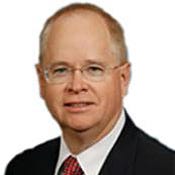IT Hiring And Promoting Not An Exact ScienceIT Hiring And Promoting Not An Exact Science
Some readers took issue with my last column, but I'm sticking by my proven interviewing practices and processes.

Several readers took issue with my most recent column, in which I laid out my process for interviewing candidates for IT VP positions. The comments posted online and sent to me by email expressed a concern that this process might not select the most qualified person. More than one reader wondered how I would know that the unsuccessful candidates would not do a good job. And always there's the belief that the people getting the promotions tend to be just like the person making the decision. These are all good points, which I will address below.
One commenter asked if I would have hired Steve Jobs using my process. I've admired Jobs since 1979, when I bought an Apple II s/n 8825. While I doubt he has ever interviewed for a VP job, had he been an external candidate I am certain two things would have happened: We would have quickly determined he wasn't a fit for the IT VP position we were trying to fill; and we would have recognized a great talent (albeit not for IT), put him in front of a different set of executives, and scrambled to find a way to hire him.
At least six times in my career, an extremely talented, total-mismatch-for-the-job external candidate has triggered such exceptional efforts. And the companies were always unsuccessful because they couldn't offer what these candidates wanted and/or the bureaucracy objected and won. Most companies say they want to hire "a Steve Jobs," but few are able to make it happen, and it has nothing to do with the interview process. Just note that when an extremely talented, totally overqualified IT person unexpectedly appears, almost all companies are able to create a position.
Internal VP candidates often complain that getting promoted is all a matter of who you know. That's true. So get to know everyone.
Years ago, as a pilot in the Air Force, I was taught that having a bad reputation is better than having no reputation at all. It proved true.
My crew developed a mixed reputation while flying U.N. relief in India. We broke down far away from any support, and after two days of tearing the airplane apart discovered that we had messed up a checklist item. The plane wasn't broken at all. A reputation was born: We were a crew that made mistakes but could work through problems alone and isolated.
That reputation made the difference in getting to fly resupply to remote islands in the South Pacific. It sent us to Timbuktu and into Chad. And when Secretary of State William P. Rogers was stuck in Yemen when his plane broke on the way to Ethiopia, we were sent to bring him to Addis Ababa.
If you're a VP candidate, you don't want job interviewers wondering who you are and why they never heard of you--assuming you can even find your way onto the internal candidate list as an unknown. A tasteful degree of self-promotion is expected and essential.
Nonetheless, reputations must be built on a record of success, even if not all VP jobs are opened to competition. For example, some specialized VP jobs, such as data center operations, often require the current VP to groom a successor. As long as the promoting officer is satisfied with the progress of that successor, the position is closed to others. In other instances, because of the nature of the job and its location, one person might be the obvious choice. And I personally went from director to chief technology officer in my first nine months at Nielsen Marketing Research because of my initial successes and a major corporate restructuring. A record of success is a necessary condition for promotion, but there are always other factors.
 Global CIOs: A Site Just For You Visit information's Global CIO -- our online community and information resource for CIOs operating in the global economy.
Global CIOs: A Site Just For You Visit information's Global CIO -- our online community and information resource for CIOs operating in the global economy.
A misconception is that the candidate with the best record should get the job. As discussed in my previous column, a candidate's record is just the price of admission. As FedEx CIO Rob Carter says, the "difficulty of the dive" must be taken into consideration. For example, someone who has taken over a very difficult situation and shown exceptional leadership but has not been able to meet business partner expectations might be considered to have a better record than someone who inherited a well oiled organization that has never missed a delivery.
All that said, the best candidate doesn't always get the promotion. The interview process is to identify the candidates who qualify. Which one is promoted depends upon any number of company-specific objectives, and in the end it's a decision involving many people, from IT, HR, legal--and if a true officer of the company, the board of directors.
Selecting one person says nothing about the future success of the other candidates. It says only that under the selection criteria and circumstances for this position, someone else was a better fit.
Underlying this entire internal qualifying and selection process is the risk that only candidates with whom executives are comfortable and familiar get picked. To some extent this is necessary. Culture is important. Candidates who aren't a cultural fit have almost no chance of success.
But guard against the "like me" bias. I conduct interviews with an HR pro who knows my requirements. I work from a scripted set of questions, have a scoring system, and keep lots of notes. Every proposed promotion is reviewed by many people to ensure fairness. Still, as many wrote to me, bias still creeps into the promotion process at many companies.
Interviewing, hiring, and promoting are imprecise human activities. Ideally, they're based on judgment, experience, and processes that try to make them fair. The goal is to select someone who will be a successful VP. Having promoted nine people to that position over the last eight years, all of whom are very successful, I'm confident in my process.
Dr. Larry Tieman has been a senior VP at FedEx, a CIO, or a CTO for the last 20 years. He has worked with some of the great CIOs, including Max Hopper, Charlie Feld, and Rob Carter. He can be reached at [email protected].
IT is caught in a squeeze between requests for new applications, services, and device support and demands from upper management to keep budgets lean, staffing light, and operations tight. These are irreconcilable objectives as long as we spend the vast majority of our resources on legacy services. Read our report now. (Free registration required.)
About the Author
You May Also Like






